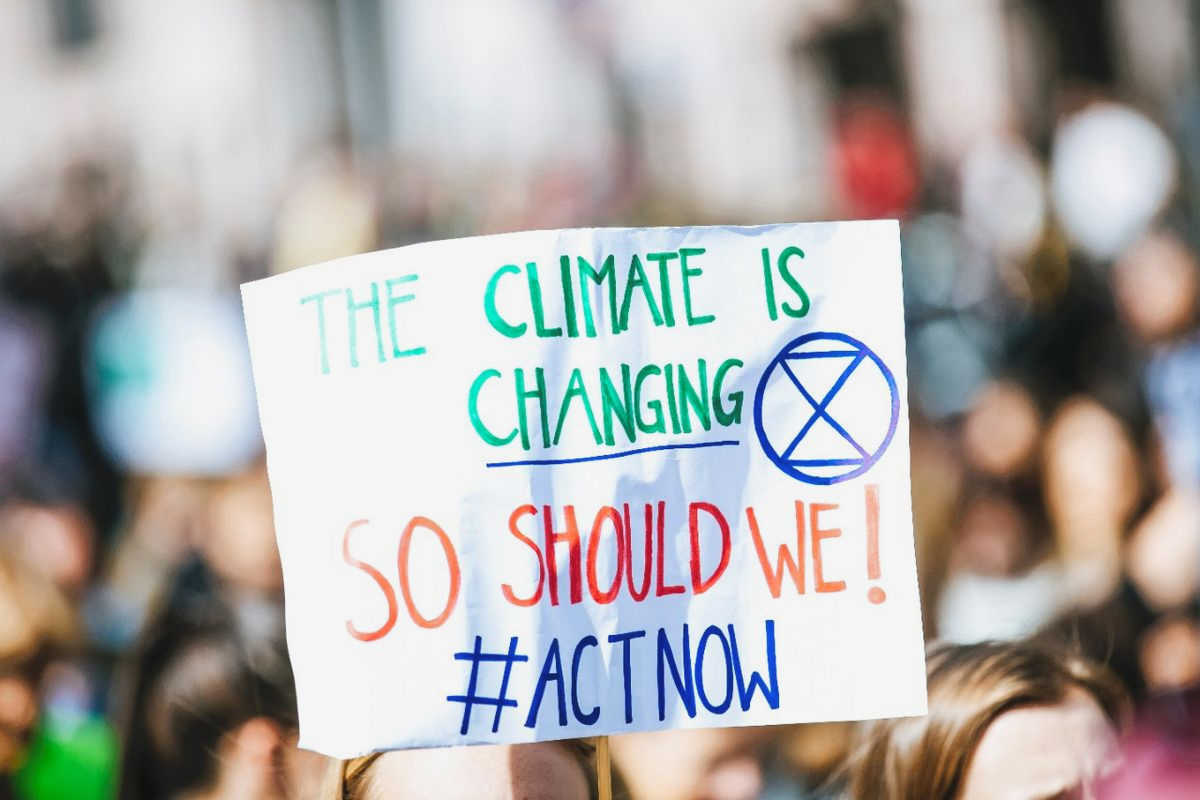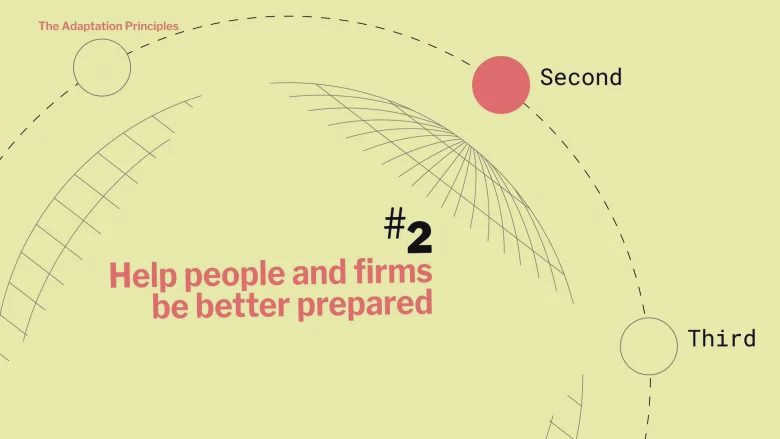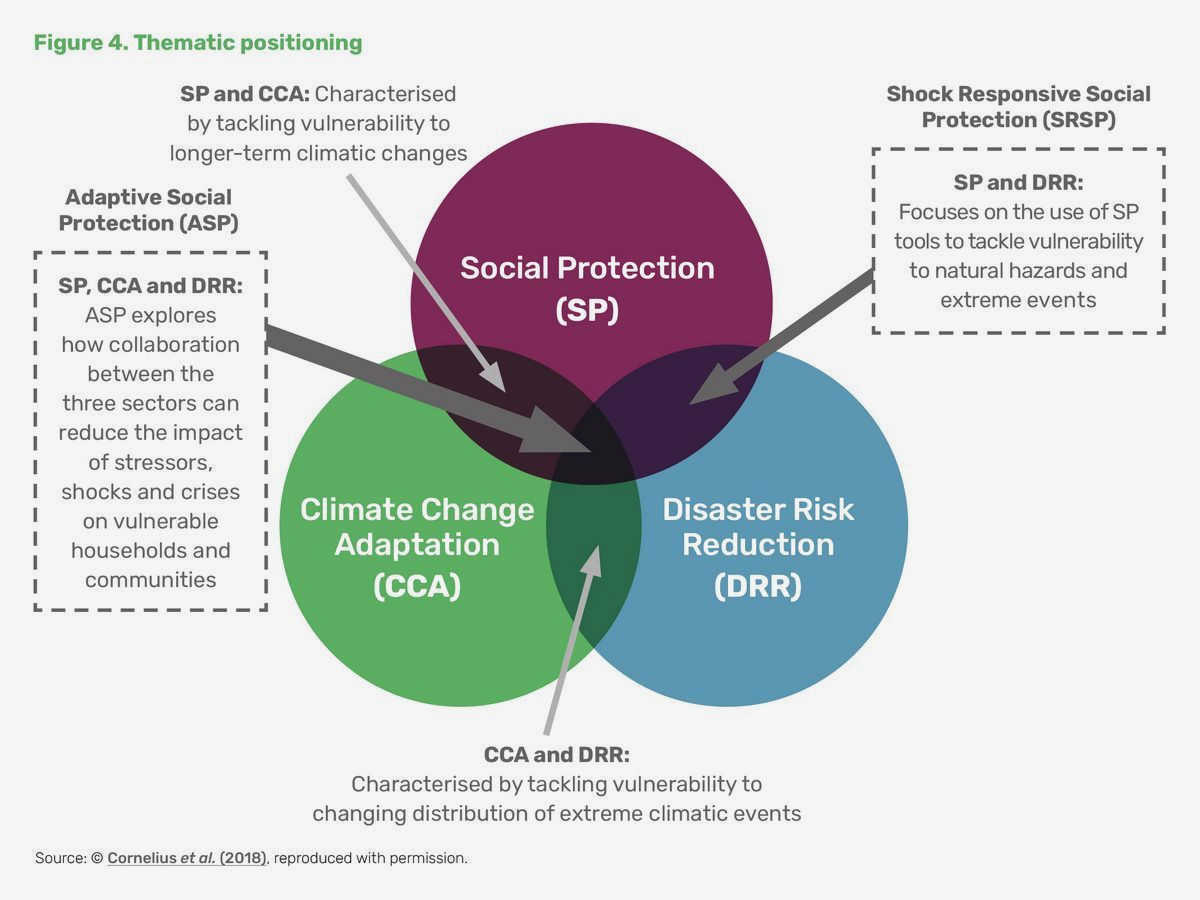Climate change is a global crisis that is impacting communities around the world. It is causing extreme weather events, disrupting ecosystems, and threatening the livelihoods of millions of people. In the face of these challenges, civil society organizations are playing a crucial role in helping communities adapt and build resilience.
Civil society organizations, including non-governmental organizations (NGOs) and community-based organizations (CBOs), are taking proactive measures to address the impacts of climate change. They are working at the grassroots level, engaging with local communities, and implementing projects that promote climate adaptation and resilience.
These organizations are involved in a range of activities, including awareness-raising campaigns, capacity-building initiatives, and the implementation of sustainable practices. They are helping communities to understand the risks and challenges posed by climate change, and equipping them with the knowledge and skills to respond effectively.
Furthermore, civil society organizations are advocating for policy changes and promoting the integration of climate resilience into local and national development plans. They are collaborating with governments, businesses, and other stakeholders to shape policies and practices that prioritize climate adaptation and ensure the long-term viability of communities.
Fostering Resilience through Partnership
Climate change poses significant challenges to communities around the world, requiring them to adapt and build resilience to its impacts. Civil society organizations play a crucial role in supporting these communities in their efforts to become more resilient. One key way they do this is through partnership.
Partnering with other organizations, governments, and community members allows civil society organizations to pool resources, knowledge, and expertise to address the complex and multifaceted challenges of climate change. By working together, these partnerships can foster resilience by promoting collaboration, innovation, and collective action.
Partnerships can take many forms, ranging from informal collaborations to formal alliances. They can involve a wide range of stakeholders, including scientists, policymakers, grassroots organizations, and community leaders. By bringing together diverse perspectives, partnerships can help to identify and implement effective strategies for building resilience.
Through partnerships, civil society organizations can also mobilize resources and funding for climate adaptation projects. By leveraging their connections and networks, these organizations can access financial support from governments, philanthropic foundations, and other donors. This allows them to implement projects and initiatives that might not otherwise be possible, further enhancing community resilience.
Furthermore, partnerships can help to amplify the voices of marginalized communities and ensure they are included in decision-making processes. By working with civil society organizations, these communities can gain greater representation and influence in climate adaptation efforts, ensuring that their unique needs and perspectives are taken into account.
In conclusion,
Fostering resilience through partnership is crucial in the face of climate change. By collaborating with other organizations and stakeholders, civil society organizations can leverage resources, knowledge, and expertise to address the diverse challenges of climate change. Through partnerships, communities can build resilience, adapt to the impacts of climate change, and create a more sustainable and inclusive future.
Climate Change Adaptation: Challenges and Opportunities
Challenges
Climate change adaptation poses numerous challenges that require careful consideration and collaboration. One of the key challenges is the uncertainty surrounding the extent and timing of climate change impacts. This uncertainty makes it difficult for communities and organizations to plan and implement effective adaptation strategies. Additionally, the varying regional impacts of climate change add another layer of complexity, as different communities face unique challenges based on their geographical location and socioeconomic factors.
Another challenge is ensuring that adaptation efforts are equitable and inclusive. Vulnerable populations, such as low-income communities and marginalized groups, often bear the brunt of climate change impacts. Therefore, it is crucial to address social inequities and ensure that adaptation measures are accessible to all, including those with limited resources or marginalized identities.
Furthermore, financial constraints can hinder adaptation efforts. Developing and implementing comprehensive adaptation plans require significant financial investments, which may be a challenge for communities or organizations with limited funding. Securing funding for adaptation projects, especially in developing countries, is crucial to building resilience and adapting to the impacts of climate change.
Opportunities
Despite the challenges, climate change adaptation also presents opportunities for innovation and collaboration. One such opportunity is the development and implementation of nature-based solutions. These involve using natural ecosystems and biodiversity to mitigate and adapt to the impacts of climate change. Nature-based solutions not only provide environmental benefits, such as carbon sequestration and water regulation, but also offer opportunities for economic development and social well-being.
Another opportunity lies in fostering collaboration between various stakeholders, including civil society organizations, governments, researchers, and local communities. By working together, these stakeholders can pool their expertise, resources, and knowledge to develop robust adaptation strategies. Collaboration also empowers communities to actively participate in decision-making processes, ensuring that adaptation measures are context-specific and community-driven.
Technological advancements also open doors for innovative adaptation solutions. For example, the use of remote sensing and satellite imagery can provide valuable data for monitoring and predicting climate change impacts. Advanced modeling and simulation techniques can help assess the effectiveness of different adaptation strategies, enabling informed decision-making. Additionally, digital platforms and communication technologies can facilitate information sharing and knowledge exchange, empowering communities to take informed actions to adapt to climate change.
In conclusion, while climate change adaptation presents challenges, it also offers opportunities for transformative action. By addressing the challenges and seizing the opportunities, communities can enhance their resilience and adapt to the impacts of climate change.
Building Sustainable Communities
Building sustainable communities is crucial in the face of climate change. These communities are able to adapt and thrive by implementing strategies that promote social, economic, and environmental resilience.
Sustainable infrastructure: One key aspect of building sustainable communities is the development of sustainable infrastructure. This includes implementing renewable energy solutions, such as solar or wind power, to reduce dependence on fossil fuels. Additionally, sustainable infrastructure involves designing and constructing buildings and transportation systems that are energy-efficient and minimize carbon emissions.
Eco-friendly practices: Another important element of building sustainable communities is the adoption of eco-friendly practices. This includes promoting waste reduction and recycling, implementing water conservation measures, and encouraging sustainable agriculture practices.
Community engagement: Building sustainable communities requires active involvement and engagement from community members. It is important for residents to be educated about the benefits of sustainability and to participate in decision-making processes that affect their community. This can be achieved through community forums, workshops, and educational initiatives.
Collaboration and partnerships: Building sustainable communities also requires collaboration and partnerships between various stakeholders, including civil society organizations, government agencies, businesses, and community members. By working together, these stakeholders can pool resources, share knowledge and best practices, and implement sustainable initiatives more effectively.
Resilience planning: Lastly, building sustainable communities involves resilience planning. This includes identifying and addressing vulnerabilities and risks associated with climate change, such as extreme weather events and rising sea levels. It also involves developing strategies to mitigate these risks and enhance community resilience, such as implementing early warning systems, establishing emergency response plans, and improving infrastructure to withstand climatic shocks.
Overall, building sustainable communities is essential for adapting to climate change and ensuring the long-term well-being of communities. By focusing on sustainable infrastructure, eco-friendly practices, community engagement, collaboration, and resilience planning, communities can become more prepared, adaptable, and resilient in the face of climate change.
Civil Society Organizations: Key Players in Climate Change Adaptation
Civil society organizations (CSOs) play a crucial role in climate change adaptation efforts. With their unique expertise, resources, and networks, CSOs are key players in helping communities adapt to the impacts of climate change.
Expertise: CSOs bring specialized knowledge and skills to the table when it comes to climate change adaptation. They have a deep understanding of the science behind climate change and its impacts on communities, as well as the social, economic, and political factors that shape vulnerability and resilience. This expertise allows CSOs to develop effective strategies for building adaptive capacity and promoting sustainable practices.
Resources: CSOs often have access to resources that can support climate change adaptation efforts. This includes funding from donors and grants, as well as partnerships with other organizations and government agencies. CSOs can use these resources to implement adaptation projects, provide technical support and training to communities, and raise awareness about the need for adaptation action.
Networks: CSOs have extensive networks that allow them to reach and collaborate with a wide range of stakeholders. This includes local communities, government officials, scientists, and other CSOs. By bringing these diverse actors together, CSOs can facilitate dialogue, knowledge sharing, and collective action on climate change adaptation. These networks also enable CSOs to advocate for policy changes that support adaptation efforts at the local, national, and international levels.

Participation and Empowerment: CSOs prioritize community participation and empowerment in their climate change adaptation initiatives. They engage local communities in the decision-making process and ensure that their voices are heard. This participatory approach not only ensures that adaptation strategies are relevant and effective, but also fosters a sense of ownership and responsibility among community members.
Monitoring and Evaluation: CSOs play a critical role in monitoring and evaluating climate change adaptation projects. They collect data, conduct assessments, and analyze the effectiveness of adaptation measures. This feedback allows CSOs to identify gaps and challenges, learn from their experiences, and continuously improve their strategies and interventions.
In summary, civil society organizations are key players in climate change adaptation. Their expertise, resources, networks, participatory approach, and monitoring and evaluation efforts contribute to building resilient communities that are able to adapt to the impacts of climate change.
Engaging Local Communities in Climate Resilience
The impact of climate change is increasingly felt across the world, with communities experiencing more frequent and severe extreme weather events. In order to effectively adapt to these challenges, it is crucial to engage local communities in climate resilience efforts. This means involving community members in the decision-making processes and empowering them with the knowledge and tools to take action.
One way to engage local communities in climate resilience is through education and awareness campaigns. By providing information about the impacts of climate change and the importance of resilience, communities can better understand the risks they face and the steps they can take to protect themselves. Workshops, training sessions, and community meetings can be organized to disseminate this information and create a space for dialogue and collaboration.
Empowering local communities
Empowering local communities involves giving them a sense of ownership and agency in climate resilience efforts. This can be achieved by involving community members in the planning, implementation, and evaluation of resilience projects. By including them in decision-making processes, their perspectives and needs can be taken into account, leading to more effective and sustainable solutions.
Furthermore, capacity-building initiatives can empower local communities by providing them with the skills and resources necessary to adapt to climate change. This can include training programs on sustainable farming techniques, water conservation methods, or renewable energy technologies. By equipping communities with practical knowledge, they can become more self-reliant and resilient in the face of climate impacts.
Creating networks and partnerships
Engaging local communities in climate resilience also involves creating networks and partnerships. Civil society organizations can play a crucial role in facilitating these connections by bringing together different stakeholders, including community members, government agencies, academic institutions, and businesses. By fostering collaboration and sharing resources, these networks can enhance the resilience capacity of local communities.
Additionally, civil society organizations can work with local communities to advocate for policies and initiatives that support climate resilience. By raising awareness and voicing the concerns of community members, they can influence decision-makers and promote the integration of climate resilience measures into development plans.
In conclusion, engaging local communities in climate resilience is essential for building adaptive capacity and ensuring the well-being of communities in the face of climate change. By involving community members, empowering them, and creating networks and partnerships, civil society organizations can foster resilience and support communities in adapting to the challenges ahead.
Capacity Building and Knowledge Transfer
Capacity building and knowledge transfer are essential components in fostering resilience within communities affected by climate change. Civil society organizations play a crucial role in providing resources and support to help communities develop the skills and knowledge needed to adapt and respond effectively.
Capacity Building
Capacity building involves enhancing the ability of individuals, groups, and organizations to identify and address challenges related to climate change. Civil society organizations facilitate capacity building by offering training programs, workshops, and other educational initiatives. These initiatives focus on a range of topics, such as sustainable farming practices, water management, disaster preparedness, and renewable energy technologies. By equipping community members with the necessary skills and knowledge, capacity building enables them to actively participate in decision-making processes and implement adaptive measures.
Knowledge Transfer
Knowledge transfer refers to the sharing of information, expertise, and best practices between different stakeholders. Civil society organizations play a crucial role in facilitating knowledge transfer by acting as intermediaries between researchers, policymakers, and local communities. They ensure that the latest scientific findings and policy recommendations are accessible and understandable to community members. Through workshops, seminars, and community meetings, civil society organizations promote dialogue and exchange between experts and community members. This knowledge transfer enables communities to make informed decisions and take action to mitigate the impacts of climate change.
In addition to facilitating capacity building and knowledge transfer, civil society organizations often provide ongoing support and resources to communities. This includes access to funding opportunities, networking platforms, and technical assistance. By strengthening the resilience of communities, civil society organizations contribute to long-term sustainability and ensure that communities can effectively adapt to the challenges posed by climate change.
Collaboration and Networking for Greater Impact
Collaboration and networking among civil society organizations (CSOs) play a crucial role in fostering resilience and helping communities adapt to climate change. By working together, CSOs can leverage their resources, knowledge, and expertise to create a greater impact.
One way CSOs collaborate is through joint projects and initiatives. By pooling their resources and expertise, CSOs can develop comprehensive programs that address multiple aspects of climate change adaptation. This collaborative approach allows for a more holistic and integrated response to the challenges posed by climate change, ensuring that communities are better prepared to withstand its impacts.

Networking is also essential for CSOs to increase their reach and influence. By participating in networks, CSOs can connect with other organizations, government agencies, and stakeholders working in the field of climate change adaptation. These networks provide opportunities for knowledge exchange, learning, and collaboration, enabling CSOs to tap into new resources and expand their impact.
Collaboration and networking also enable CSOs to advocate for policy changes and promote greater resilience at a larger scale. By joining forces, CSOs can amplify their voices and exert more influence on decision-making processes. This collective action can lead to the development and implementation of policies that support climate change adaptation and help build more resilient communities.
In conclusion, collaboration and networking are crucial strategies for CSOs to foster resilience and help communities adapt to climate change. By working together and building strong networks, CSOs can maximize their impact, advocate for change, and ensure that communities are better prepared for the challenges of a changing climate.
Innovative Solutions for Climate Resilience
Climate change poses significant challenges for communities around the world, requiring innovative solutions to build resilience. Civil society organizations are at the forefront of developing and implementing these solutions, working closely with communities to adapt to changing environmental conditions.

One innovative solution is the use of nature-based approaches to enhance climate resilience. This includes the restoration of ecosystems such as wetlands and forests, which can help mitigate the impacts of climate change by absorbing and storing carbon dioxide. In addition, these natural areas can provide valuable ecosystem services, such as flood control and water purification, which are crucial for community resilience.
Another innovative approach is the integration of renewable energy sources into community infrastructure. By transitioning to renewable sources like solar and wind power, communities can reduce their reliance on fossil fuels and decrease greenhouse gas emissions. This not only helps mitigate climate change but also improves community resilience by increasing energy independence and reducing vulnerability to fluctuations in fuel prices.
Information and communication technologies (ICTs) are also playing a crucial role in fostering climate resilience. Through the use of sensors, data analytics, and remote monitoring systems, communities can gather and analyze real-time data on climate patterns, water availability, and other environmental indicators. This data can help inform decision-making, allowing communities to better anticipate and respond to climate-related risks.
Furthermore, collaborative approaches are being used to foster climate resilience by bringing together different stakeholders and sectors. Multi-stakeholder platforms, for example, enable civil society organizations, government agencies, businesses, and community members to collaborate on climate resilience initiatives. This enables the sharing of knowledge, expertise, and resources, while also encouraging a more holistic and integrated approach to climate resilience.
Overall, innovative solutions for climate resilience are essential to help communities adapt to the challenges posed by climate change. By leveraging nature-based approaches, integrating renewable energy sources, harnessing ICTs, and fostering collaboration, civil society organizations are playing a critical role in building resilience and ensuring the long-term sustainability of communities around the world.
Empowering Vulnerable Groups
One of the key goals of civil society organizations in the context of climate change adaptation is to empower vulnerable groups. These groups, which may include women, children, indigenous communities, and people living in poverty, are often disproportionately affected by the impacts of climate change. Empowering them means providing them with the knowledge, resources, and skills they need to adapt and build resilience.
Educating: One way civil society organizations can empower vulnerable groups is by educating them about the risks and impacts of climate change, as well as the available adaptation strategies. This can be done through workshops, trainings, and awareness campaigns. By increasing their knowledge and understanding, these groups are better able to make informed decisions and take actions to protect themselves and their communities.
Building capacity: In addition to education, civil society organizations also play a crucial role in building the capacity of vulnerable groups. This involves providing them with the necessary resources, such as financial support, tools, and technology, to implement adaptation measures. It also includes fostering the development of local leadership and encouraging community participation in decision-making processes. Building the capacity of vulnerable groups helps to ensure that they have the skills and resources to adapt to climate change effectively.
Facilitating collaboration: Civil society organizations also facilitate collaboration among vulnerable groups, as well as between these groups and other stakeholders, such as government agencies and businesses. By creating platforms for dialogue and collaboration, they enable the exchange of knowledge, experiences, and best practices. This collaboration helps to strengthen the adaptive capacity of vulnerable groups and foster collective action in addressing climate change.
Promoting inclusivity: Lastly, civil society organizations work towards promoting inclusivity in climate change adaptation efforts. They aim to ensure that the voices and needs of vulnerable groups are heard and taken into account in decision-making processes. This involves advocating for policies and practices that are equitable and address the specific vulnerabilities of these groups. By promoting inclusivity, civil society organizations help to create a more just and resilient society in the face of climate change.
In conclusion, civil society organizations play a vital role in empowering vulnerable groups to adapt to climate change. Through education, capacity building, collaboration facilitation, and promotion of inclusivity, they enable these groups to take proactive measures and build resilience. By empowering vulnerable groups, civil society organizations contribute to more equitable and sustainable climate change adaptation efforts.
Advocacy and Policy Influence
Fostering resilience and facilitating adaptation to climate change requires not only community-based actions but also changes in policies and regulations at the local, national, and international levels. Civil society organizations play a crucial role in advocating for these changes and influencing policy decisions.
Policy Research and Analysis
Civil society organizations conduct research and analysis to understand the impacts of climate change and identify policy gaps and opportunities. They collect data, conduct surveys, and analyze existing policies to assess their effectiveness in addressing climate change issues. This research helps to shape evidence-based policy recommendations and strategies for adaptation and resilience-building.
Policy Advocacy
Civil society organizations engage in policy advocacy to influence decision-makers and policymakers. They raise awareness about climate change issues and the need for action, and mobilize support from the public, media, and other stakeholders. Through campaigns, lobbying efforts, and public consultations, they promote policies that prioritize climate change adaptation, mitigation, and resilience-building.
Partnerships and Coalitions
Civil society organizations form partnerships and coalitions with other stakeholders, including government agencies, academic institutions, and businesses, to amplify their voices and influence policy decisions. By collaborating with various actors, they can leverage their collective expertise, resources, and networks to advocate for policy changes that address the needs and concerns of communities vulnerable to climate change.
Monitoring and Accountability
Civil society organizations play a crucial role in monitoring policy implementation and holding decision-makers accountable for their promises. They track the progress of policy measures, assess their effectiveness, and raise concerns and recommendations if necessary. By promoting transparency and accountability, civil society organizations ensure that policies and programs are implemented effectively and benefit the communities they are designed to support.

In summary, civil society organizations play a vital role in advocating for policy changes, conducting research, mobilizing support, and monitoring policy implementation. Their efforts contribute to the development of climate change policies that prioritize adaptation and resilience-building, ultimately helping communities to better cope with the impacts of climate change.
Measuring Impact and Ensuring Accountability
Measuring the impact of civil society organizations (CSOs) in fostering resilience and adaptability to climate change is crucial for evaluating their effectiveness and ensuring accountability. CSOs can use various methods and tools to assess the outcomes and long-term impacts of their initiatives.
Long-term Monitoring: CSOs can implement long-term monitoring systems to track changes and progress in the communities they work with. This can involve regular surveys, assessments, and data collection to measure the extent to which the community has been able to adapt to climate change.
Evaluation frameworks:
CSOs can develop evaluation frameworks that include clear indicators, objectives, and targets to measure their impact on fostering resilience. These frameworks can help identify and quantify the outcomes and impacts of their activities, providing a basis for accountability and future planning.
Participatory approaches:
Engaging the community in the evaluation process is essential for ensuring accountability and capturing diverse perspectives. CSOs can use participatory approaches, such as focus groups, interviews, and community-based monitoring, to involve stakeholders in assessing the impact of their initiatives.
Knowledge sharing: CSOs should also prioritize sharing their findings and lessons learned with other organizations and stakeholders. This can be done through reports, workshops, conferences, and online platforms, allowing for greater transparency and accountability.
Engagement with policymakers: CSOs can further ensure accountability by actively engaging with policymakers and advocating for policies that support climate resilience. This can include providing evidence-based recommendations and sharing the results of their impact assessments to influence policy decisions.
Continuous improvement: Finally, CSOs should continuously assess and refine their strategies and approaches based on the feedback and lessons learned from their impact assessments. This iterative process can help improve the effectiveness and efficiency of their initiatives in fostering resilience and adaptability to climate change.





